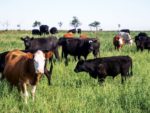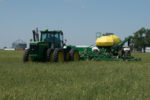Advertise Follow Us
Articles Tagged with ''cover crop grazing''
Challenging Growing Conditions Fuel No-Tiller’s Passion for Experimentation
Compacted clay soils and wet planting conditions are no match for Wisconsin no-tiller Adam Lasch, whose experiments in diversification provide fodder for his livestock while rehabbing the land.
Read More
No-Till Farmer Web Page Offers Tips on Managing Prevented Planting Acres, Disaster Aid
The editors of No-Till Farmer, Strip-Till Farmer and Cover Crop Strategies assembled this web page to serve as a source for growers looking for options on prevented-planting acres in the U.S. and potentially find sources of disaster aid.
Read More
No-Till Farmer Web Page Offers Quick Access on Managing Prevented Planting Acres, Disaster Aid
The editors of No-Till Farmer, Strip-Till Farmer and Cover Crop Strategies assembled this web page to serve as a source for growers looking for options on prevented-planting acres in the U.S. and potentially find sources of disaster aid.
Read More
No-Till, Covers and Livestock Tame Volatile Weather Challenges
Howling winds, dryness and poor soil quality create tough conditions in South Africa, but Egon Zunckel is making no-till work with limited irrigation, cover crops and livestock.
Read More
Cover Crop Grazing 101: Get Your Plan Together
Understanding livestock and soil health goals, crop rotation and soil types can help no-tillers make grazing cover crops a more profitable venture.
Read More












